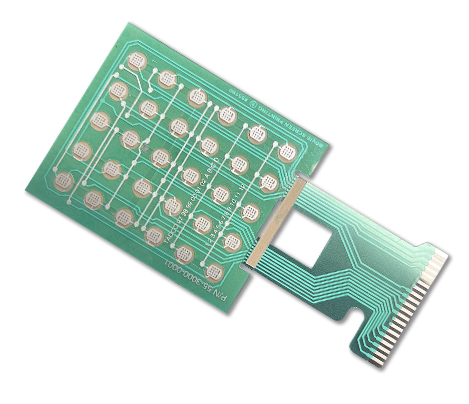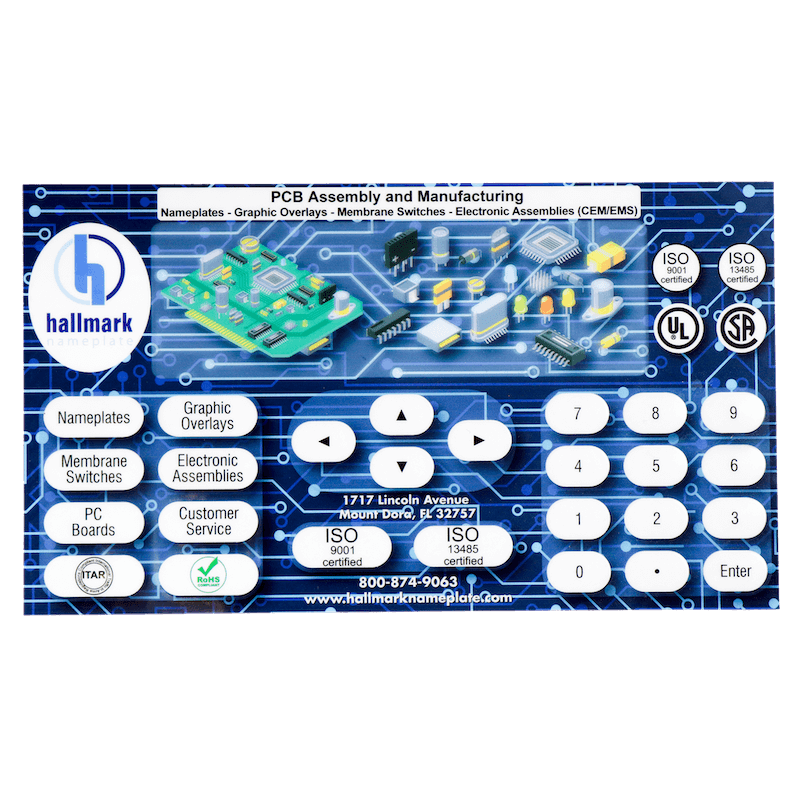Why Membrane Switches Are Gaining Popularity in the Automotive Industry
Comprehending the Significance of Membrane Switches in Interface
Membrane buttons are important parts in the style of efficient customer interfaces, facilitating not only performance yet likewise enhancing visual appeal and individual communication. As we explore the future fads and numerous advantages linked with Membrane technology, it ends up being clear that these switches are much more than simply elements; they represent a convergence of development and functionality.
What Are Membrane Buttons?

The spacer layer, which has sticky properties, permits the separation of the circuit layer from the overlay, guaranteeing that the button stays in a non-activated state up until pushed. When stress is put on the overlay, it compresses the spacer layer, connecting the void and finishing the circuit in the underlying layer. This layout not only reduces the physical area required for standard mechanical switches however additionally enhances the resilience of the gadget, as Membrane buttons are usually resistant to dust, moisture, and other environmental variables.
Generally located in applications ranging from customer electronics to clinical tools, Membrane buttons are indispensable to modern-day technology, giving a user-friendly and effective interface that lines up with contemporary style demands.
Advantages of Membrane Buttons
While many switch innovations exist, Membrane Switches offer distinctive benefits that make them specifically desirable in various applications. One of the main advantages of Membrane switches is their small style, which permits space-saving executions in gadgets where realty is limited. Their slim profile not only improves aesthetic appeal but also helps with light-weight building and construction.
Another considerable advantage is their resistance to ecological aspects. Membrane buttons are commonly sealed versus dampness, dirt, and pollutants, making them optimal for usage popular environments, such as clinical devices and commercial devices. This durability prolongs the life-span of the button, lowering maintenance expenses and improving integrity.
In addition, Membrane switches can be personalized to satisfy certain design demands, integrating unique graphics and shades that boost customer interaction. Their responsive feedback choices can likewise be customized to give a rewarding user experience. Furthermore, Membrane buttons are cost-efficient, particularly in high-volume applications, as they can be produced efficiently.
Applications in Different Industries

In the consumer electronic devices field, Membrane switches prevail in gadgets such as microwaves, cleaning machines, and remotes. Their responsive comments and visual alternatives enhance customer experience while supplying a smooth, modern look. Additionally, vehicle manufacturers utilize Membrane buttons in dashboard controls and infomercial systems, where area is limited, and user engagement is vital.
In addition, the commercial industry leverages Membrane buttons in control panels for machinery and equipment, enabling instinctive procedure in typically rough atmospheres. Their resistance to chemicals and dampness ensures long life and reliability in these applications. Generally, the adaptability of Membrane Switches contributes substantially to their widespread use, making them crucial in various technical domains.
Layout Considerations for Membrane Switches

When creating Membrane buttons, several key considerations have to be taken into account to make certain optimal functionality and individual experience. The option of materials is crucial; picking resilient, high-quality substrates can enhance the switch's longevity and resistance to environmental elements such as moisture and temperature level changes.
Secondly, the style of the visuals overlay must prioritize quality and simplicity of usage. Icons and text should be readable, and the design must help with intuitive interaction (membrane switches). Furthermore, responsive responses is important; integrating a responsive dome or various other mechanisms can boost the customer experience by providing physical confirmation of activation
One more essential aspect is the switch's electrical efficiency. Developers should guarantee that the conductive traces are correctly developed to reduce resistance and prevent signal disturbance. This includes examining the required actuation pressure and ensuring compatibility with the digital parts they will certainly user interface with.

Future Trends in Membrane Technology
As technology continues to advancement, Membrane switches are positioned to develop substantially, driven by developments in materials and producing techniques. One arising fad is the unification of innovative products, such as versatile substrates and conductive inks, which improve durability and decrease the total weight of Membrane buttons. These materials not just boost the responsive feedback but additionally enable the style of switches that can withstand harsher environmental problems.
In addition, the integration of touch-sensitive technologies is changing standard Membrane Switches into more interactive user interfaces. Capacitive touch sensors embedded within Membrane button panels can provide an extra user-friendly and responsive user experience, straightening with the growing need for streamlined, contemporary layouts in customer electronic devices.
Additionally, innovations in printing strategies, such as electronic and 3D printing, make it possible for rapid prototyping and personalization of Membrane buttons. This versatility enables producers to react quicker to market demands and customer preferences.
Lastly, Visit Your URL sustainability is coming to be a significant emphasis, with suppliers discovering environmentally friendly products and procedures. As these have a peek here trends unfold, the future of Membrane innovation promises enhanced functionality, visual allure, and environmental obligation, solidifying their role in innovative interface throughout various sectors.
Conclusion
In final thought, Membrane Switches represent a crucial element in the style of customer interfaces, combining performance with aesthetic flexibility. As improvements in technology continue, the advancement of Membrane buttons is expected to further improve user interfaces, driving innovation and improving usability in a significantly complicated technological landscape.
Membrane switches are essential components in the style of effective customer interfaces, promoting not only functionality yet likewise enhancing visual appeal and user communication.Membrane Switches offer as an essential part in different user interfaces, helping with a seamless interaction in between customers and electronic gadgets.While numerous switch modern technologies exist, Membrane Switches offer unique advantages that make them specifically desirable in numerous applications.Moreover, Membrane switches can be tailored to fulfill certain layout requirements, including distinct graphics and colors that boost user communication.In final thought, Membrane Switches stand for an essential component in the design of individual interfaces, incorporating performance with aesthetic flexibility.